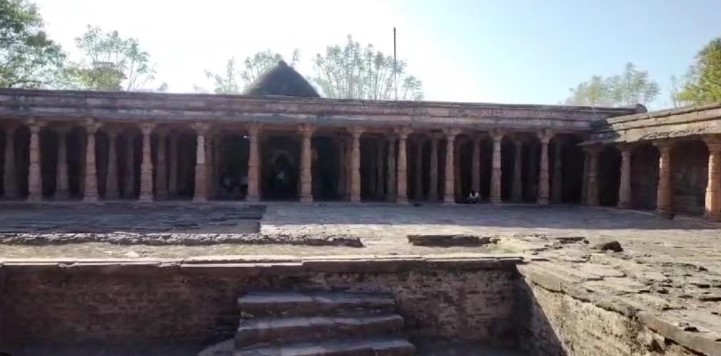Context:
Recently, the Madhya Pradesh HC has ordered an ASI survey of the Bhojshala Temple-Kamal Maula Mosque Complex. to “demystify” its nature.
The Dispute:
• Petitioner (Hindu Front for Justice): They claim an earlier ASI report supports their stance. They believe the original Bhojshala and Vagdevi temples were destroyed to build the mosque. They requested a new survey to uncover the site’s history.
• Respondent: They have challenged the maintainability of the suit, citing the principle of res judiciata (that a judged matter may not be relitigated). They pointed out the a similar writ petition was dismissed by the High Court’s Principal Bench in 2003..
Court’s Decision:
• The court acknowledges the monument’s unclear history.
• The court, citing the Monument Act, 1958 tasked the ASI with conducting a comprehensive scientific survey using advanced technology like GPR-GPS and Carbon dating to determine the monument’s origin.
• The survey will not only cover the complex itself but also a 50-meter surrounding area.
About the Bhojshala Temple-Kamal Maula Mosque Complex
It is a historic site in Dhar, Madhya Pradesh, with contested religious significance.
• Two Names, Two Beliefs: Hindus revere it as the Bhojshala Temple, dedicated to the goddess Saraswati (Vagdevi). Muslims know it as the Kamal Maula Mosque, a place of worship.
• ASI Protected Monument: The Archaeological Survey of India (ASI) manages the complex as a monument of national importance.
• Current Use: According to an arrangement in ASI, Hindus perform puja at the complex on Tuesdays, while Muslims offer namaz on Fridays.
• Origins and Dispute: The complex’s origins are unclear. While some link it to King Bhoja of the Paramara dynasty (a patron of arts and learning) in 11th Century AD, there’s no definitive proof. The Hindu Front for Justice has challenged the ASI’s arrangement, arguing that Kamal Maula Mosque was constructed during the reign of Alauddin Khilji between the 13th and 14th centuries by “destroying and dismantling ancient structures of previously constructed Hindu temples”.
Archaeological Survey of India (ASI)
It is a governmental organization established in 1861. It is responsible for the preservation and study of India’s rich cultural heritage through the provisions of the Ancient Monuments and Archaeological Sites and Remains Act (AMASR Act), 1958.
• Founder: Alexander Cunningham (Father of Archaeology in India)
• Mission: Preservation, exploration, and documentation of India’s archaeological sites and monuments.
• Under Ministry: Ministry of Culture, Government of India
• Impact: Instrumental in safeguarding India’s cultural legacy.
Key methods used by the Archaeological Survey of India (ASI):
• Ground-Penetrating Radar (GPR) with GPS: GPR combined with GPS technology allows for non-invasive detection of buried structures and features while precisely mapping their locations on the ground.
• Carbon Dating: Radiocarbon dating, or carbon dating, is used to determine the age of organic materials such as wood, bone, and charcoal found at archaeological sites, providing valuable chronological information.
• Aerial Photography and Remote Sensing: Aerial photography and satellite imagery aid in identifying archaeological features and landscape patterns not easily visible from the ground, facilitating site detection and mapping.

